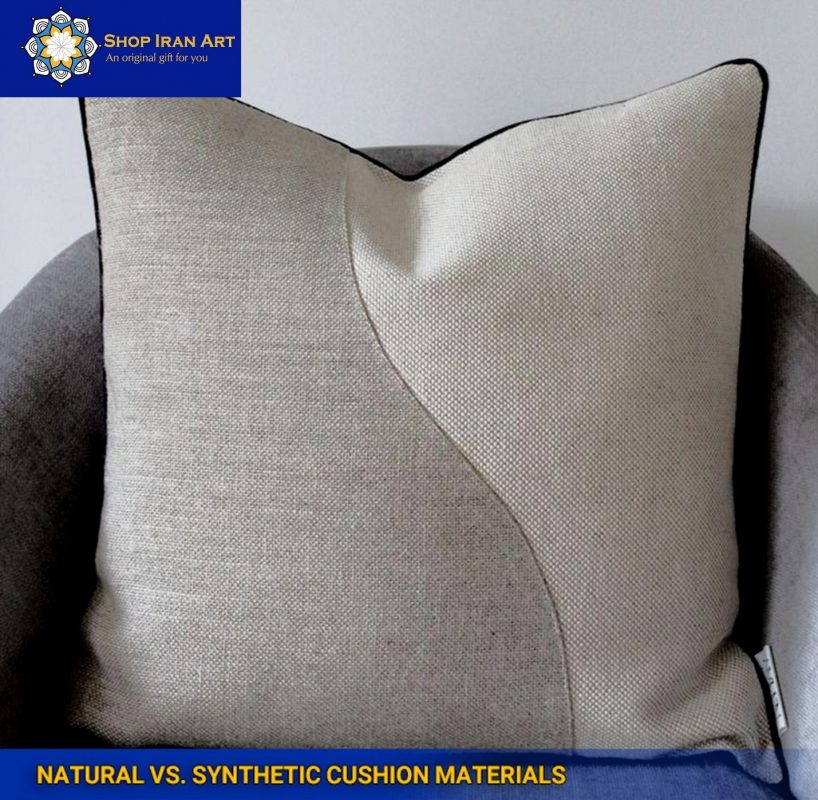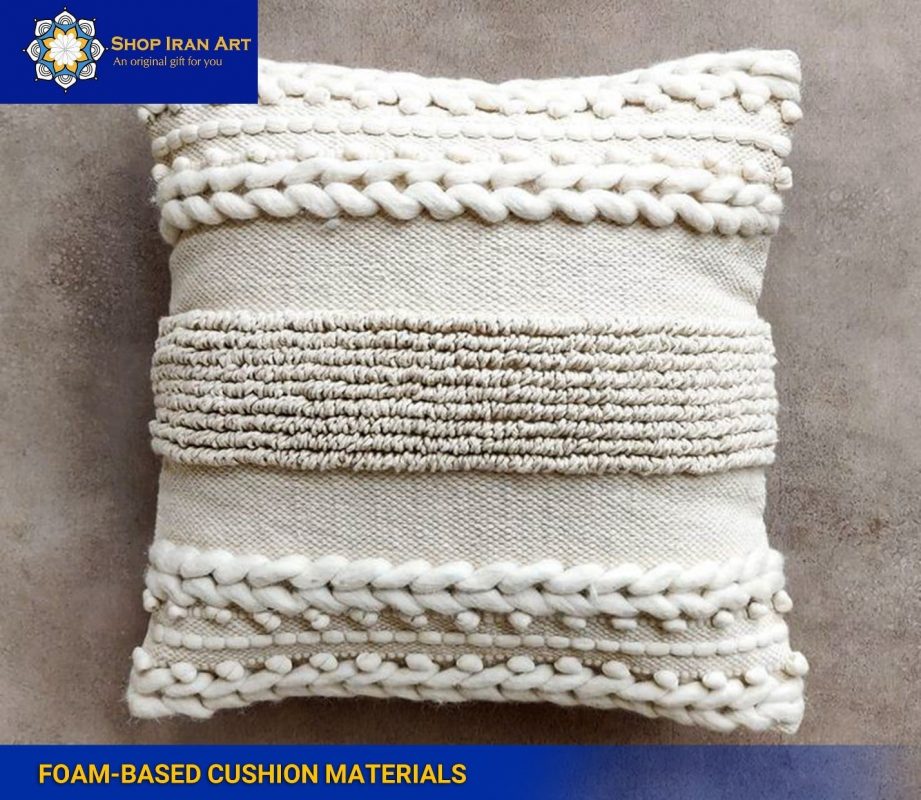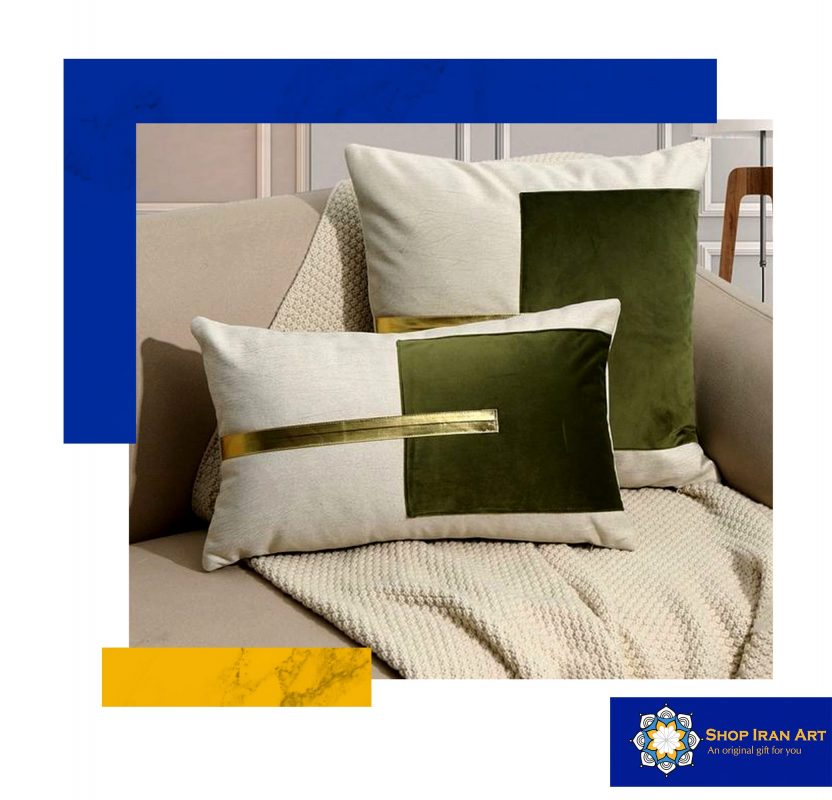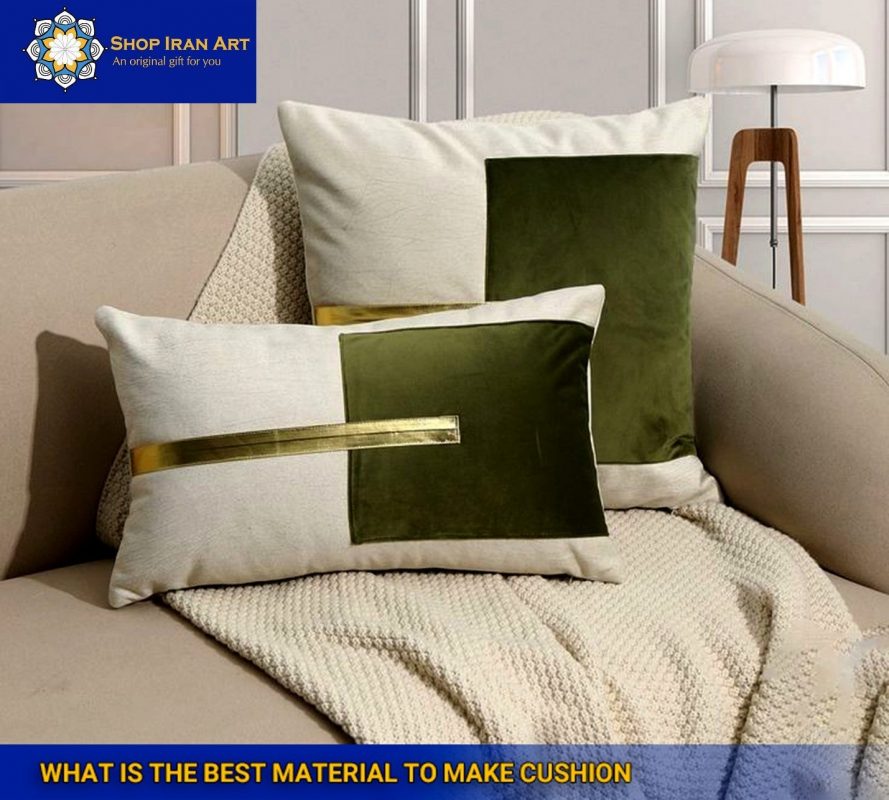Sin categorizar
What Is The Best Material To Make Cushion
what is the best material to make cushion
Choosing a suitable cushion material is essential for optimal comfort, support and durability. The range of choices is vast, from natural fibres like cotton and wool to synthetics like polyester and foam. Understanding the properties and benefits of each material is essential to making an informed decision about what best suits your specific needs.
Introduction to Cushion Materials
The material of the cushions is an essential element frequently overlooked when building a welcoming and comfortable seating area. The cushions’ texture, whether sitting on a soft sofa or an upholstered chair, significantly influences how comfortable and supported you feel. A fundamental awareness of pillow materials is required to make an educated choice when selecting or making a pillow for varied functions.
The world of cushion materials is diverse, offering various options to suit different preferences and needs. From natural fibres like cotton wool down to synthetic materials such as polyester and foam, each material possesses unique qualities that contribute to the overall feel and performance of the cushion.
We may learn more about the various damping materials available by investigating their properties and benefits. Synthetic materials, for example, are highly durable and flexible, but natural fibres are breathable and have a soft, comfortable feel. To get the desired result, it is critical to balance comfort, utility, and aesthetics when picking a cushion material.
Factors to Consider When Choosing Cushion Materials
When choosing cushion materials, several key factors should be considered to ensure optimal comfort, longevity, and overall satisfaction. Understanding and evaluating these factors allows you to make an informed decision that aligns with your needs and preferences. Let’s explore the essential considerations when selecting cushion materials:
Durability and Longevity
One of the primary factors to consider is the durability of the cushion materials. How well will they withstand regular use and the test of time? Factors such as the material’s resistance to wear, tear, and fading are crucial, especially for cushions subjected to heavy usage. Additionally, considering the cushion’s construction, stitching, and overall quality can contribute to its longevity.
Comfort and Support
Cushions are designed to provide a comfortable ride, so the ability of the material to provide adequate support is very important. Take into account the density, firmness and bounce of the pillow, as these factors play a large role in determining the level of comfort. Different materials can provide different levels of cushioning, from soft and plush to firmer support, so it’s important to find the right balance based on personal preference.
Breathability and Moisture Management
Carpets are prone to moisture accumulation, especially in humid environments or when subjected to spills or sweat. Mould, mildew, and objectionable odours may be avoided by choosing materials with suitable breathability and moisture conductivity. Wool and cotton are two natural, incredibly breathable fibres, but other synthetic textiles with moisture-wicking properties can also be employed.

Natural vs. Synthetic Cushion Materials
Regarding cushion materials, a significant decision is whether to opt for natural or synthetic options. Both categories have their characteristics and benefits, so understanding their differences can help you choose the suitable material for your cushions. Let’s explore the factors involved in the natural versus synthetic cushion material debate:
Comfort and Feel
Luxurious and soft to the touch, natural cushion materials like cotton, wool, and down bring an indulgent sensation. These materials possess natural breathability, promoting airflow and temperature regulation, ultimately ensuring a pleasant seating encounter. Conversely, synthetic materials such as polyester and foam provide varying degrees of support and cushioning, offering options ranging from gentle to firm based on the particular type and density opted for.
Durability and Resilience
Artificially engineered materials to absorb shocks usually offer better durability and flexibility. These materials are designed to endure rough usage and are well-suited for frequently utilized mats and high-traffic areas. Polyester and foam, for instance, are recognized for their capacity to maintain their form and quickly recover even when subjected to extended compression. On the other hand, although generally sturdy, natural materials may demand additional attention and upkeep to ensure their prolonged lifespan.
Environmental Impact
Sustainability and environmental factors come into play when evaluating natural and synthetic cushion materials. The comparison considers raw materials’ biodegradability and renewable sourcing, making them a greener choice. Certifications like organic or fair trade further guarantee the sustainable supply of organic components. On the other hand, synthetic materials are often more durable and derived from nonrenewable resources, resulting in a larger carbon footprint.
Foam-based Cushion Materials
Foam-based pillow materials have revolutionized the world of comfort and support, offering a variety of ways to create pillows that meet specific needs and preferences. From polyurethane to memory foam and latex foam, foam-based materials are famous for their unique properties and ability to enhance the seating experience. Let’s dive into the world of foam cushion materials and explore their features and benefits:

Polyurethane Foam
Polyurethane foam is a versatile material widely used in cushion manufacturing and is available in a variety of densities that provide customized levels of firmness and support. These foam pads are durable and retain their shape and integrity even with prolonged use. In addition, they provide excellent cushioning, effectively distributing weight evenly across the surface and reducing pressure points.
Memory Foam
Memory foam, also known as viscoelastic foam, has gained immense popularity due to its ability to conform to the body’s contours. When pressure is applied, memory foam softens and moulds to the shape, providing personalized support and pressure relief. It has a unique characteristic known as “memory,” as it slowly returns to its original condition when pressure is released. This feature makes memory foam cushions ideal for individuals seeking enhanced comfort and alleviation of pressure points.
High-Resilience Foam
High-resilience foam, often called HR foam, is designed to provide robust support and comfort. It has a higher density than traditional polyurethane foam, offering enhanced durability and longevity. HR foam cushions balance firmness and softness, providing optimal support for prolonged sitting. They bounce back quickly after compression, maintaining their shape and performance over time.
Discover the wide range of cushion materials available at Shop Iran Art, where you can find the perfect material to create a comfortable and inviting seating experience.
Conclusion
Choosing a suitable cushion material is critical to creating a comfortable and supportive sitting experience. Whether you choose natural or synthetic materials, foam padding or special options, each material has unique properties and benefits that will improve your comfort and overall well-being.
What are the expected natural pillow materials?
Common natural pillow materials are cotton, wool, down and natural latex.
Are foam pillows suitable for people with allergies?
It depends on the specific foam material. Natural latex foam is hypoallergenic, making it a good option for allergy sufferers.
How long do foam pads usually last?
The lifespan of foam pads depends on use, quality and maintenance. Foam pillows can last 5 to 10 years if properly cared for.





